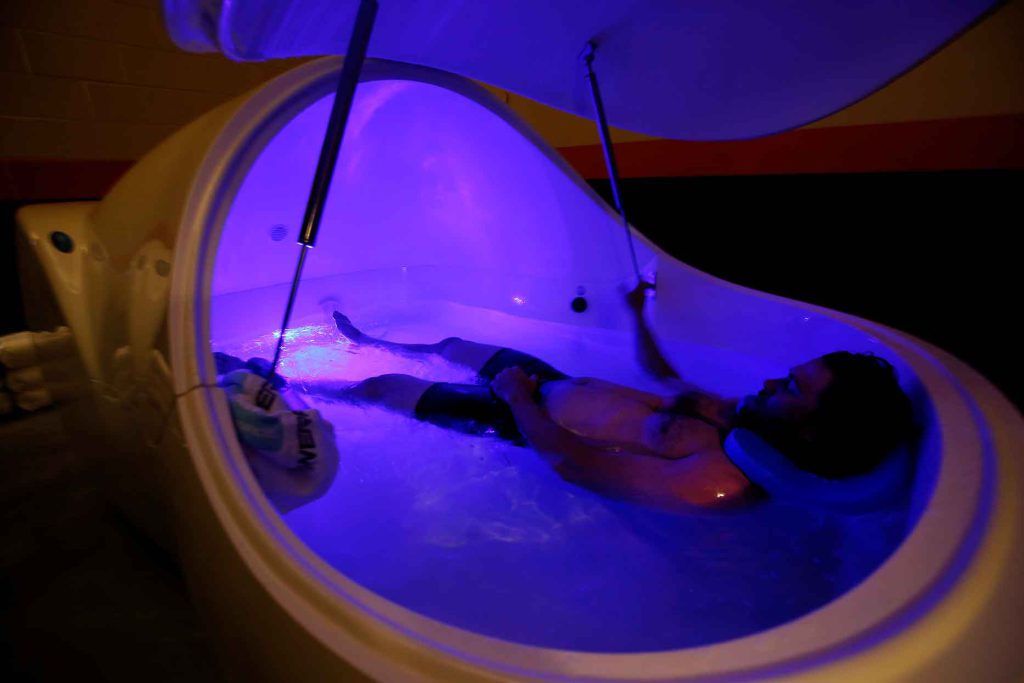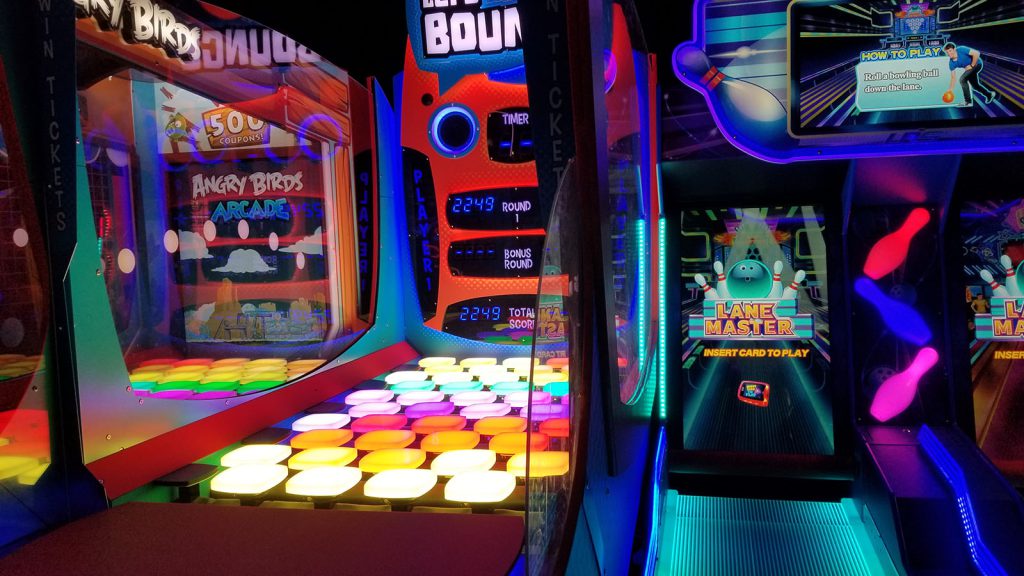What the Cacophony of Modern Life Taught Me About Noise in the Ancient World
Today the cacophony of modern life makes it difficult to find, much less achieve, true silence. In our electrified world, there is always a rattle or hum somewhere.
As I type, the dishwasher runs in the kitchen. When it finishes its cycle, I hear the furnace. If I turn off the furnace, I hear the buzz of the high-efficiency fluorescent lightbulbs in the fixture above the dining-room table. If I flip the light switch, I can still hear the cars on Colorado Boulevard one block away. If I block that noise out with earplugs, I still am startled by the sound of random notifications coming across my wife’s cellphone. (Not on mine: I turned all the notifications off long ago.)
The sounds of contemporary life never seem to end—unless you completely unplug. Recently, I tried to do just that in a sensory deprivation tank, a lightproof, soundproof tank or pod in which the user floats in warm water. (I’ve tried exercise, meditation, and yoga in my ongoing effort to disconnect from the modern world. This may be the most peculiar chapter.)
After my first session in that tank (there will be more), I got to thinking about our preindustrial human ancestors and how they experienced sound. What were the loudest noises our ancestors had to deal with? What would they think of our cacophonous world today? To say they’d be startled would be an understatement, but let’s go back to my initial attempt at sensory deprivation.
The facility I went to was located in a small strip mall. Soft music, the kind I’d never listen to at home, wafted from hidden speakers. Overpriced lotions and potions of various kinds lined the walls. Many types of customers were there: seasoned veterans who knew exactly what to do and how to behave, and awkward neophytes like me who had no idea what was going on. Once the attendant started to explain things, however, I started to relax.
We walked into a large room that looked vaguely like a wheelchair accessible bathroom in a hotel. There was a small bench to the left and a shower in the far corner. A white, shell-like pod sat in the middle of the room, open like a clamshell. It was full of water supersaturated with Epsom salts to help keep the user afloat. The water was heated to a consistent 95 degrees—the same temperature as your skin—so when you float, you can lose track of how much of your body is actually submerged.
My task, then, was to strip down, shower, and lie down in the pod. The blue LED lights at the waterline remained on for five minutes, then they dimmed until I was floating in total darkness. After 40 minutes, the lights came back on, and life slowly but surely returned to normal.
(For all you claustrophobes, you can get out any time. You just sit up and push open the lid. No sweat.)
Life back in the day was a lot quieter than it is now.
I’d like to say that I achieved total, peaceful relaxation during the hour I spent in the float, but I did not. On the contrary, my mind raced much of the time, probably because I had too much caffeine that morning and certainly because of my existential willies: What should I be feeling? Am I doing something wrong? How much time do I have? Why can’t I relax? Ultimately, I did relax, but I’m not going to lie—it took a while. Maybe I missed the white noise of modern life more than I thought.
The attendant told me first-timers often have the same reaction I did. The experience is so unusual that they never totally relax. He said I would achieve complete relaxation on my second or third trip. After cynically saying “nice sales pitch” under my breath, I agreed he was probably right. Several days later, I spoke to a friend who floats once a month—it took him three sessions before he first truly relaxed, but now he’s addicted to his floats. Looks like I’ll be buying a membership! (Yes, a person can purchase a membership that allows for several floats per month.)
At the other end of the sensory spectrum, I recently spent an hour in a Dave & Buster’s restaurant. For the uninitiated, Dave & Buster’s is a national food and entertainment chain that combines all the best, and worst, of sports bars and gaming arcades. They’re loud, chaotic, and expensive. My wife and I took our three boys when the games were all half-priced, so the place was packed with families. The things we do as parents.
Everyone seemed to be having a good time—except me. I had landed in my personal version of hell.
The only available table when we arrived was located directly in front of a game called Grand Piano Keys, in which players pound on oversized piano keys after they light up in sequence. Since no one was playing the game, it automatically generated “Chopsticks” in a perpetual, loud, and largely fruitless effort to attract customers. (If you don’t remember “The Celebrated Chop Waltz” off the top of your head, Google it. It’s a 19th-century British earworm that will make you flash back to middle school, summer camp, or both. My apologies in advance.)
In truth, my feeling of sensory overload that night was not unexpected. I’d rather read than go to a concert. I’d rather hike than go to a sporting event. I gain energy from being alone, not from being with a group. Perhaps not surprisingly, I’d rather go back to the sensory deprivation tank a million times than return to Dave & Buster’s once.
Most of the archaeological sites I’ve worked at, especially those in the U.S. Southwest, are located in desert or forested areas that are really, really quiet. Museum storerooms tend to be peaceful as well. In both places, you can be alone with your thoughts—perhaps another reason I love my chosen profession.
So, what did our ancestors hear on a daily basis? A normal human conversation registers about 60 decibels. A loud thunderclap is about 120 decibels but lasts only a few seconds. (The decibel scale is logarithmic, so a thunderclap is not twice as loud as a human conversation, it’s at least 10 times louder.) Drums and musical instruments can get loud, but they are played by choice. In the absence of modern amplification technologies, they probably weren’t a regular nuisance. The male white bellbird, the loudest bird on the planet, has a mating call that can reach 125 decibels. Thankfully, his call is episodic—but beware the next time you’re in the Amazon during bellbird mating season.
Certainly, our ancestors heard the conversations between people in their family, kin groups, and larger assemblies. They would have heard music, singing, and dancing during special occasions and rites of passage, not to mention during the normal course of business—such activities have been part of our behavioral repertoire for tens of thousands of years. They’d hear fights, arguments, and oration during times of conflict. They’d hear babies crying and children playing, just like many do today, despite the fact that the young (and indeed, the old) are tremendously compartmentalized in many modern societies.
Our human ancestors would have heard wind, animals, and the near continuous buzz of insects all around, not to mention the perpetual and beautiful sound of water if they lived near a river or the ocean. But truly loud sounds were probably quite rare back then and came only during thunderstorms or natural catastrophes—and were, therefore, rightfully heard and interpreted as threats. The consistent rattle and hum of modern urban life would be totally shocking to them. Long story short, life back in the day was a lot quieter than it is now.
In the end, I guess I shouldn’t complain. It could be worse, and that sensory deprivation tank is but a few miles away. Silence beckons.



































